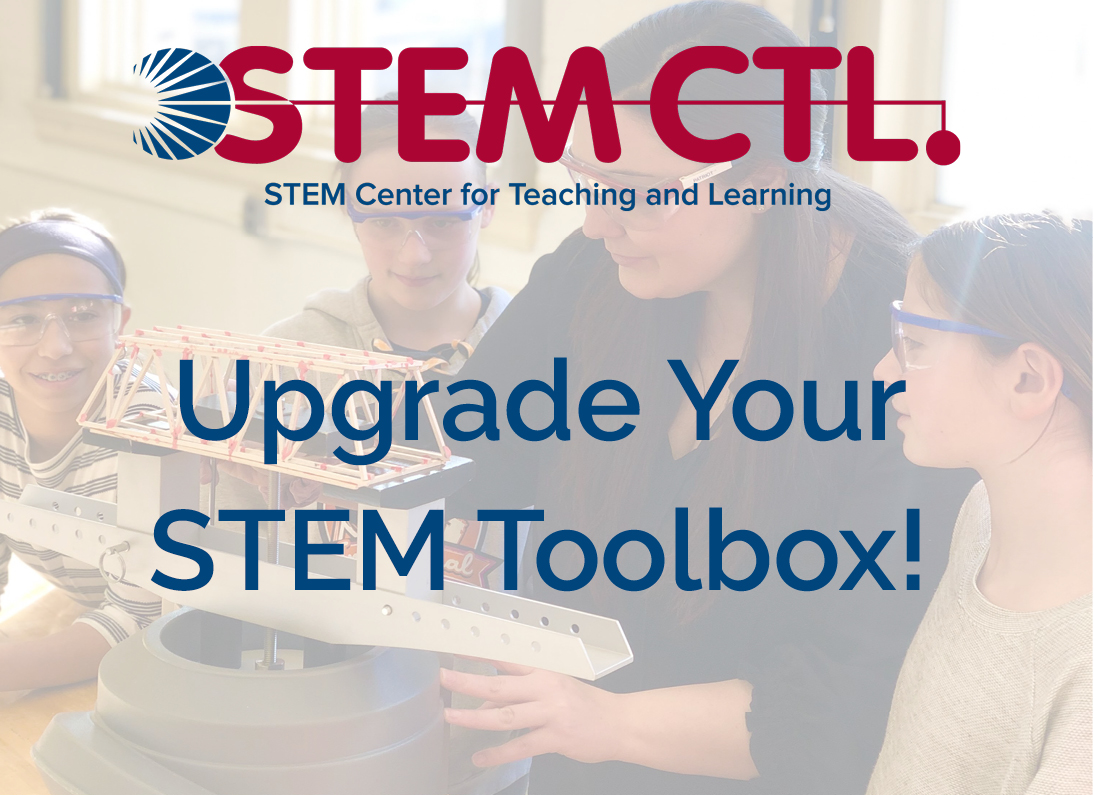6E Learning byDesign™
The 6E Learning ByDeSIGN™ Model is an innovative instructional framework designed to enhance technology and engineering education by integrating design and inquiry-based learning. This model builds on the well-established BSCS 5E Instructional Model, adding a crucial sixth phase: eNGINEER.
At ITEEA’s STEM Center for Teaching & Learning, we believe that all students can engineer. It’s not about becoming an Engineer with a capital "E"; it’s about embracing the engineering mindset and problem-solving skills that empower students to make a difference in their world. By using "engineer" as a verb, we emphasize that engineering is not just a career path but an action accessible to all students. This subtle yet significant choice underscores our commitment to inclusive and active learning. All students can engineer, and through our 6E Model, we provide the tools and opportunities for them to do so.
ENGAGE
- Purpose: To capture students' interest and connect their prior knowledge to new concepts.
- Student Activities: Students become familiar with the concepts, identify what they know and want to learn, and make connections between past and present learning experiences.
- Teacher Role: The teacher introduces the lesson, checks for understanding, clarifies the big ideas, and encourages students to ask questions.
EXPLORE
- Purpose: To provide hands-on experiences where students investigate and build a foundational understanding of the topic.
- Student Activities: Students work in teams to explore phenomena and materials, engage in discussions, and make hypotheses.
- Teacher Role: The teacher facilitates exploration by providing materials, guiding focus, and encouraging inquiry-based learning.
EXPLAIN
- Purpose: To encourage students to articulate their understanding and refine their ideas through discussion and reflection.
- Student Activities: Students explain concepts, participate in discussions, and use various communication tools to express their understanding.
- Teacher Role: The teacher introduces new vocabulary, corrects misconceptions, and leads discussions to deepen understanding.
eNGINEER
- Purpose: To apply learned concepts to design and create solutions, emphasizing the engineering design process.
- Student Activities: Students use their knowledge to design and build solutions, test and redesign their projects, and apply engineering concepts.
- Teacher Role: The teacher guides students through the design process, provides resources, and encourages creativity and problem-solving.
ENRICH
- Purpose: To deepen students' understanding and apply their knowledge to more complex and varied contexts.
- Student Activities: Students transfer their learning to new situations, conduct research, and consider broader applications of their designs.
- Teacher Role: The teacher provides resources for further exploration, ensures connections to broader contexts, and supports effective communication.
EVALUATE
- Purpose: To assess students' understanding and provide feedback for improvement.
- Student Activities: Students demonstrate their understanding through various assessment tools, such as journals, models, and performance tasks.
- Teacher Role: The teacher uses formative and summative assessments to gauge learning, provides feedback, and ensures alignment with standards.
Each phase of the 6E model is designed to build on the previous one, creating a comprehensive and integrative approach to STEM education that emphasizes both theoretical understanding and practical application. This model helps students develop critical thinking, problem-solving, and collaborative skills essential for success in technology and engineering fields.

This model is crucial for fostering technological and engineering literacy and equipping students with the skills needed to solve real-world problems. By emphasizing the integration of design and inquiry, the 6E model ensures that students not only learn theoretical concepts but also apply them in practical, meaningful ways. This approach aligns with the Next Generation Science Standards (NGSS) and the Standards for Technological & Engineering Literacy (STEL), making it a comprehensive framework for modern STEM education.
- Enhancing STEM collaboration through reflective strategies in the 6E learning model: insights from voice recognition analysis: A study explored how the 6E Learning byDeSIGN™ Model supports student teachers in integrating artificial intelligence (AI) applications in their classrooms. The research found that the model effectively enhanced student teachers' competence in integrating AI, as evidenced by improved lesson plans and reflective journals
- Entrepreneurship, STEM attitude, and career interest development through 6E learning byDeSIGN™ model based STEM education: Another study investigated the impact of 6E-based STEM activities on middle school students' entrepreneurial skills, attitudes towards STEM, and career interests. The results showed significant improvements in students' STEM attitudes, entrepreneurial skills, and interest in STEM careers
- Enhancing STEM collaboration through reflective strategies in the 6E learning model: insights from voice recognition analysis: Research on the use of reflective strategies within the 6E Learning byDeSIGN™ Model highlighted its positive effects on students' learning performance, motivation, and participation in collaborative STEM activities
- Integrating the STEAM-6E Model with Virtual Reality Instruction: The Contribution to Motivation, Effectiveness, Satisfaction, and Creativity of Learners with Diverse Cognitive Styles: the study highlights the potential of the STEAM-6E model combined with VR to enhance motivation, creativity, and learning outcomes, while also fostering environmental awareness and sustainability among students with diverse cognitive styles.
Citation:
The ITEEA 6E Learning ByDesign™ Model: Maximizing informed design and inquiry in the integrative STEM classroom. Burke, Barry N. Technology and Engineering Teacher, v73 (6) p 14-19 Mar 2014. https://www.iteea.org/file/secure/tet-73-6-burke---6e-learning-model.pdf



